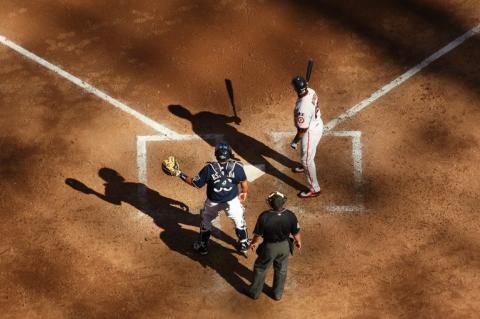Speed Walking: Baseball in a Hurry
New York Times
February 28, 2017
by Doug Glanville
As my career wound down, I sank toward the bottom of the order, at times batting eighth just in front of the pitcher. (My ball-playing experience was mostly in the National League, where pitchers hit.) When you’re batting eighth, an intentional walk is used more as a slap in the face to the ninth hitter — who’s usually regarded as more of an impostor than a hitter — than because the eighth hitter was feared in any way.
At the other extreme was Barry Bonds, who was walked intentionally 120 times in 2004, more than my 118 unintentional walks over my best three seasons. My best guess — as the engineer I studied to be — is that only potential cost overruns prevented the Giants from installing the speedup option for all of these free passes he was given, some kind of mechanical people-mover that whisked you from home to first base. That way, you could have your intentional walk, but spice it up a little for must-see TV. Hop on, Barry.
Intentional walk. Intent is doing something on purpose, and knowing how to do it. It is thought-out, planned, strategic. But paradoxically, baseball’s intentional walk has more to do with not knowing how to do something: how to get a particular hitter out when it really counts. It is avoidance, denial, fear, probability — with a sprinkle of strategy. It says, “I will take my chances with the next guy.”
This makes me think that since we’re going to change the rule, let’s also come up with a more accurate term to describe it.
The Grant Pass?
Just something that makes for a better description of what is now going on. We are giving the batter first base with no fanfare. No obstruction. It should be comically redundant. It should reflect that we don’t even notice him walking to first because the action has halted. He apparated, like Harry Potter, and we didn’t even see it.
The rule change has simply exposed the soul of the intentional walk. We thought it was part of the game, watching a pitcher throw a baseball as if he were playing with a badminton birdie. I accepted it too, because I did not want Gary Sheffield to hit a ball that took off the hand of our third baseman, with the winning run on second base.
In fact, we must recognize that we are skipping over the best players in the game in the best moments for their brilliance to shine — and pretending that’s not what’s really happening. Of course, you can’t make a pitcher throw a strike even when he’s not “intentionally” walking a hitter. But at least now we can avoid having to watch this four-pitch stagecoach limp along on the autobahn.
Let’s embrace this change. I understand why we worry about a slippery slope: Next it’s three balls for a walk or seven-inning games or, heaven forbid, a square home plate. But we are backdooring time in a game with no clock. We can’t let pitchers and batters take 30 seconds between pitches, and we certainly don’t need to give a pitcher two minutes to finish doing what we already know is happening. So, as with a ground-rule double, we’ll give the hitter the base; he’s going there anyway.
Republished from The New York Times
Photo: The Brewers giving Barry Bonds of the Giants an intentional walk in 2007.
Photo Credit: Al Tielemans/Sports Illustrated, via Getty Images






